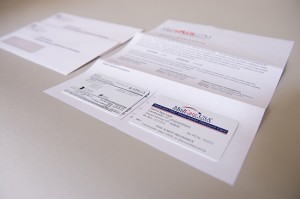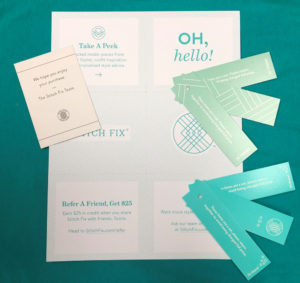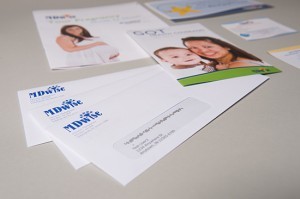Keys to Effective and Secure Variable Data Printing

Variable data printing (VDP) allows companies to personalize customer and member-based messages. According to an Adobe survey, 89% of marketers see a positive ROI when they use personalization in their campaigns. Using it wrong, however, can cost you money. Gartner reports that “in a survey of more than 2,500 customers, more than half report they will unsubscribe from a company’s communications and 38 percent will stop doing business with a company if they find personalization efforts to be ‘creepy.’” This post will cover variable data printing, what it is, how it works, and some keys to using it securely and effectively.
What is variable data printing?
Simply put, variable data printing represents a set of printed documents, each individualized to one recipient. Recipients are usually individuals, but a recipient might be other things, such as an indication of a version, a product type for a brochure, or a branch of a restaurant chain. So, the next logical question is, “What is variable data?” Variable data is personal information that pertains directly to your customers or members, including their:
- Name: With a first and last name, you can let people know and feel like you mean to be talking to them instead of the “current resident.”
- Address: Knowing specific addresses can help you target certain direct marketing areas (e.g., affluent neighborhoods).
- Age, gender, ethnicity. You may change your offers or have a specific target audience within certain age groups, genders, or cultural backgrounds. Or you may want to change your messaging to ensure that you are sending relevant content.
- Segmenting your audience by income will help you craft messages that speak to their pain points.
- Purchase history. You may send offers that appeal to individuals based on their previous purchase history.
And practically any data point that may be unique to the individual or franchise/company location.
How does it work?
Variable data printing companies extract dynamically-generated headlines, addresses, personal names, offers, or images from a file and insert them onto a static mail design template. VDP allows you to mass print personalized pieces as fast as you can print the same number of non-personalized ones.
What is it used for?
Variable data printing can be used for just about any print piece. Some common variable data printing examples include:
- Coupons and special offers
- Thank-you notes
- Envelopes
- Labels
- Postcards
- QR codes
- URLs to personalized landing pages
- Flyers
- Marketing for companies/organizations with multiple locations. Note: You may want to look into a printing company that offers eProcurement to make it easy and efficient for your locations to order specific items.
How to be Effective with Variable Data Printing
For the best results, here are some tips to be effective with VDP:
- Know your audience. Segment and target your materials to give them relevant and helpful information.
- Ensure your data integrity and maintain your database.
- Does your art file or template have placeholders indicating where variable data is to be placed?
- Does your data file(s) have header names that match the variable placeholder names?
- Consider how the information will flow into your template. Imagine how data with a lot of characters and few characters will look when added to your template.
- Consider what you will do if a variable data piece is missing from the database. What will go in its place? You need to have a plan if a data field is empty in the database that you are linking to the variable data piece. It might be as simple as a default text phrase, or a default image built into a rule statement.
- Do not ignore the postal requirements (limitations) as you start to plan out the design. It is critical that the address block, barcode, postage indicia, and return address are properly formatted and positioned, or the piece might be unmailable or lose any chance of a discount from the USPS for prepped business mail.
- Think about how you are going to track the responses. You can embed a record number someplace on the printed piece, place a barcode on the piece, code it by color, etc. It needs to be part of the design process.
- Make sure your printer understands the best practices for producing accurate variable data printing and is a preferred USPS mail provider.
Is it Secure?
Because you are handling people’s personal information, you want to ensure that you and your printer are managing your data based on compliance and privacy regulations. Moreover, some industries, such as insurance, healthcare, and banking must comply with very specific, legally protected privacy and security controls.
Variable data printed materials that are subject to higher privacy and security standards include, but are not limited to:
- New member letters and member ID cards
- Patient referral letters
- Explanation of Healthcare Benefits (EOB)
- Patient statements
- ANOC’s, Medicare Advantage & Medicaid printing
- Insurance statements, cancellation notices, renewal declarations
- Financial and legal documents
For the highest level of security and privacy, get peace of mind by hiring a variable data printing company with certain certifications. Here is a checklist of what to look for when you need secure variable data printing:
- SOC2 Type2 certified with SOC2 processes mapped to HITRUST controls
- HIPAA certified
- PUB1075 Compliant (Federal Tax Information Controls)
- A printer with physical security, as it relates to access controls, print and mail operational controls, and data privacy controls to keep your customer or member data secure
- G7 Master Printer qualified proofing and printing presses
Why Choose Fineline?
VDP has revolutionized marketing with a cost-effective, personalized method for every industry. Contact us today if you want to know more about how Fineline can help you be more effective with variable data printing and mailing services.






